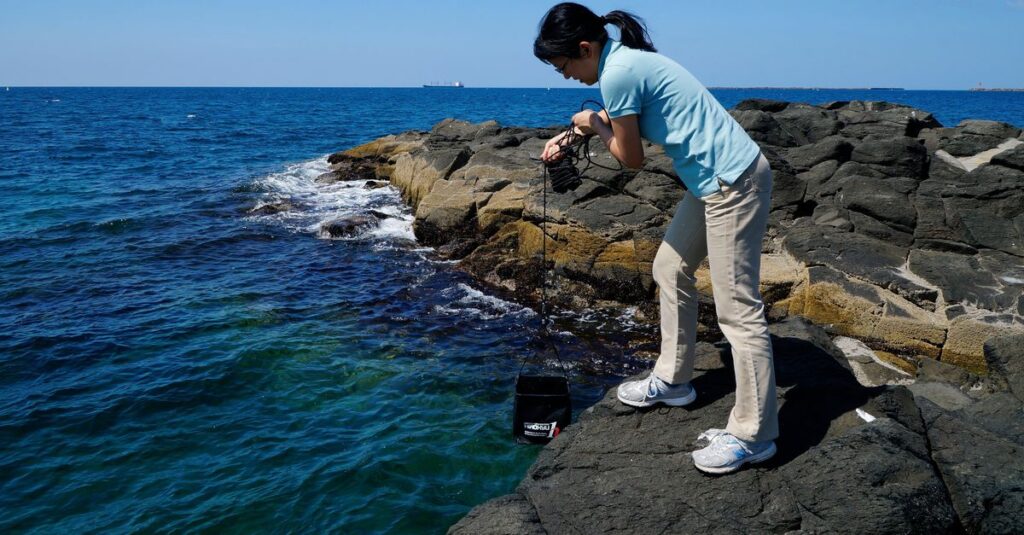Got caught! A sea algae and a bacterium with a special property came into contact with each other. The sea algae then absorbed the bacteria and slowly began to transform the bacteria into a permanent part of itself, a so-called organelle. In this way, the sea algae appropriated this special property of the bacterium. And thus gained an evolutionary advantage. The transformation from bacteria to organelle is still ongoing.
American and Japanese researchers describe this process this Thursday Science. It is the first time that a complex single-celled organism (the marine algae) has been found that possesses an organelle with which it can extract nitrogen from the water and convert it into a usable form. This so-called nitrogen fixation is a crucial process for life on Earth. Until now, the idea was that only simple single-celled organisms could do this. They take nitrogen from the air, or water, and convert it into a form that other organisms can then absorb. Nitrogen is an important building material for plants and animals, including for the production of proteins.
Divided into three groups
“This research is really a beautiful story,” responds Corné Pieterse, professor of plant-microbe interactions at Utrecht University and not involved in the study. This is also said by Carlos Santana Molina, who works as a bioinformatician at the Royal Netherlands Institute for Sea Research. “For evolutionary biology, this is really cool.”
Life on Earth is roughly divided into three groups: bacteria, archaea and eukaryotes. The latter group includes plants, animals, fungi and certain single-celled organisms. They are characterized by the fact that their cells have a cell nucleus and specialized parts, the organelles. A well-known example is the mitochondria, the energy factories of a cell.
“Mitochondrions were once free-living bacteria,” says Pieterse. They lived in symbiosis with primitive eukaryotic cells. Both organisms evolved at some point into a single cell, with the mitochondria being transformed into an organelle. “That integration started about 2.5 billion years ago,” says Santana. Something similar applies to chloroplasts, the chloroplasts in plant cells that capture solar energy and CO2 convert into carbon sources for the plant. It in now Science The organelle described is the third example of a bacterium that has been taken up by a eukaryote and transformed into an organelle. And it is the first example of a eukaryote engaging in nitrogen fixation. The authors call the organelle ‘the nitroplast’. “We estimate that the process of transformation started about a hundred million years ago,” says Jonathan Zehr, coordinating author of the study.
The researchers conclude based on a number of observations that the ingested bacteria have already been transformed to such an extent that you can speak of an organelle. Compared to its closest living relatives, the bacterium has already lost much of its DNA. In addition, the division of the bacteria is synchronous with the division of the sea algae. These are important characteristics to be able to speak of an organelle. Santana noticed something else. Some proteins of the marine algae that first served in the plastids – organelles where special chemical compounds such as pigments are made – have been given a new purpose and are now sent to the nitroplast.
The authors of the study expect that the transformation of the nitroplast will continue for some time. “Mitochondria and chloroplasts have lost much more of their original DNA,” says Zehr. “And we have not yet been able to identify any gene exchange between nitroplast and host.”
“By following the further evolution of the marine algae and the nitroplast, we may also be able to learn more about the evolution of organelles in general,” says Santana, who herself conducts research into the early evolution of the metabolism of eukaryotes.
The sea algae (Braarudosphaera bigelowii) has so far only been fished from Japanese coastal waters, Zehr says. “It took us many years to grow it in the laboratory.” But DNA from the transformed bacteria has been found all over the world. “Also in Danish waters.”
Pieterse says that the research is also interesting for plant breeders. “They have been trying for years to incorporate the entire molecular machinery for nitrogen fixation from bacteria into plants.” But that hasn’t happened yet. “The nitroplast may provide new insights.”
